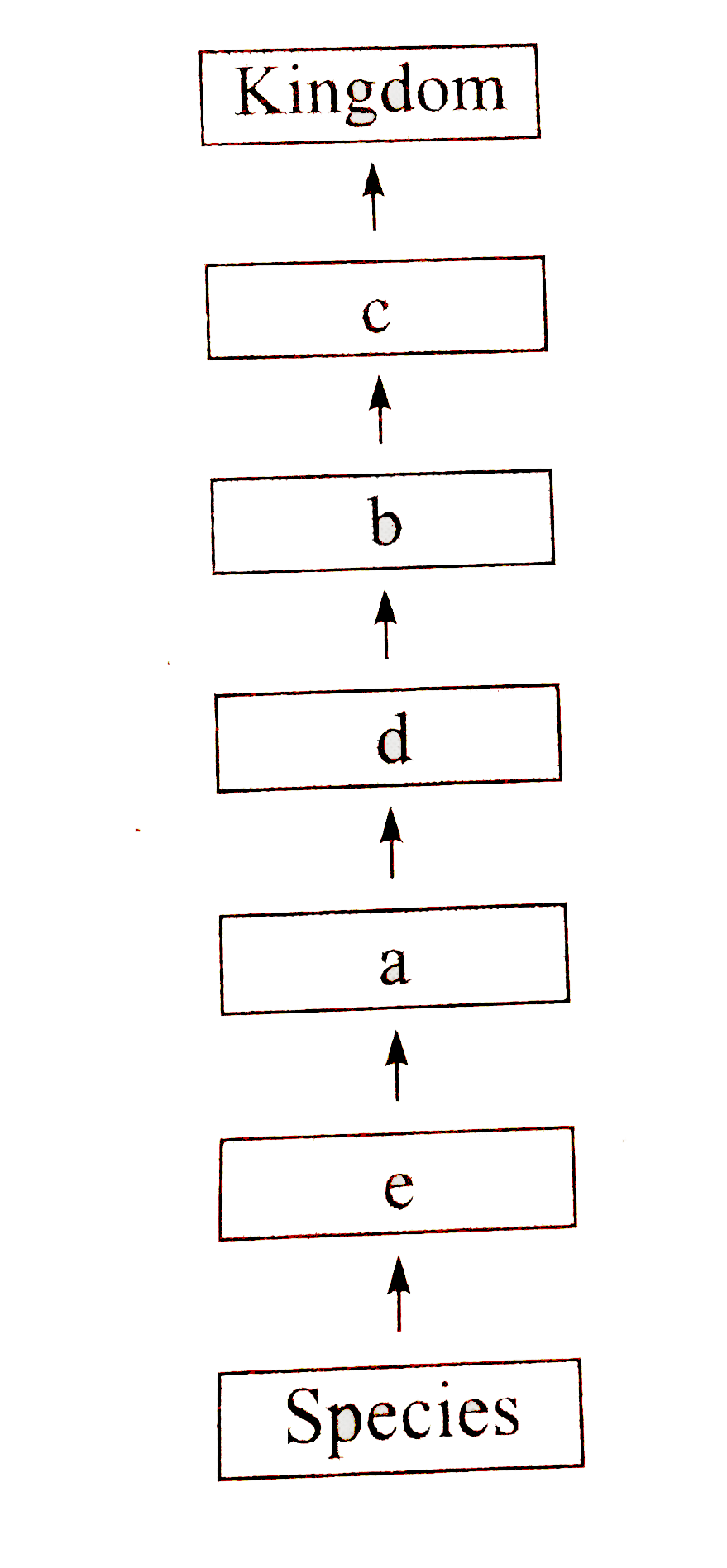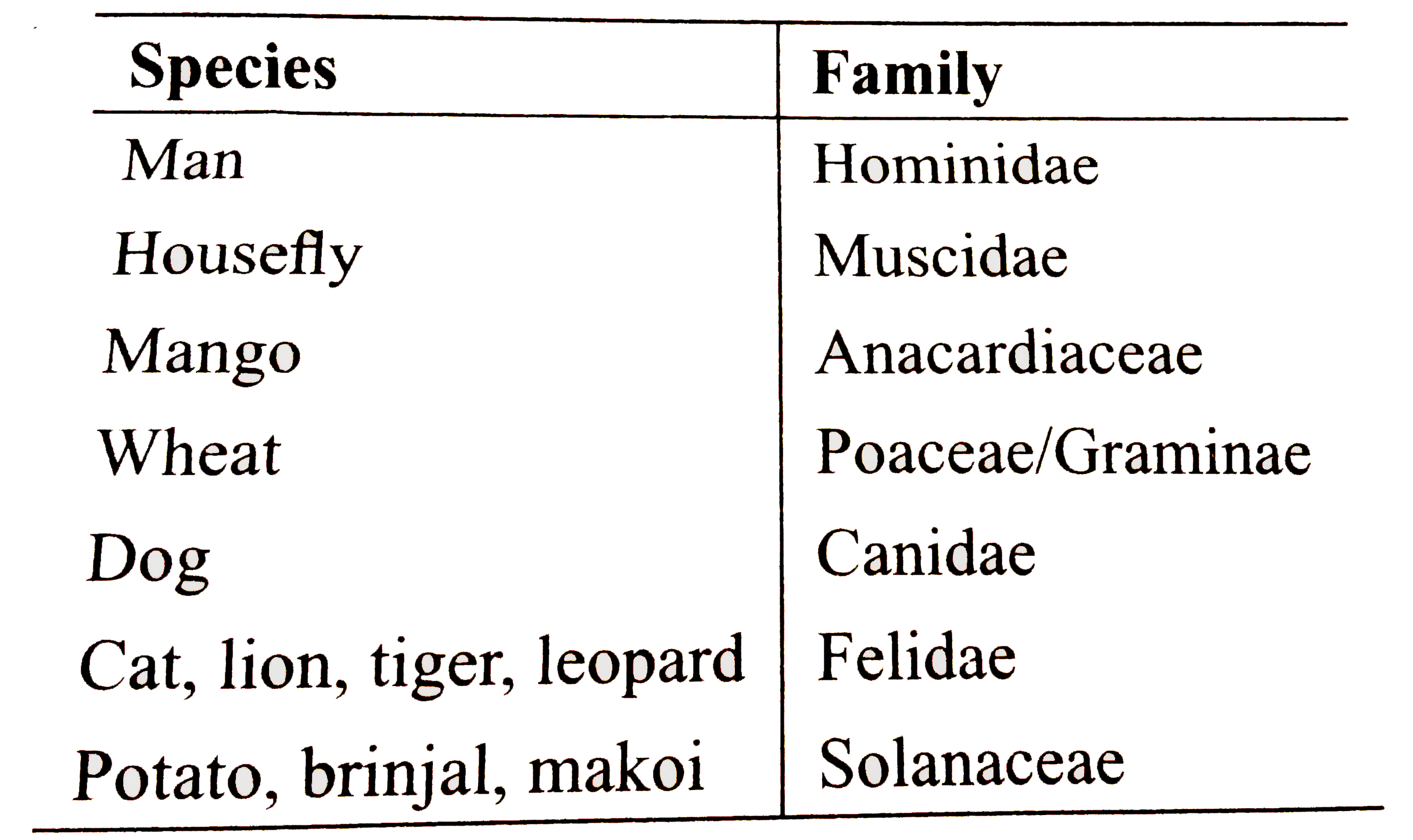The species (man, housefly, mango, wheat, dog, cat, lion, tiger, potato, brinjal, makoi and leopard) given here belong th how many different families?
4
7
5
6
The correct Answer is:B
Topper's Solved these Questions
- BOOK - A2ZCHAPTER - THE LIVING WORLDEXERCISE - Section A : Topicwise Questions Topic 4 : Taxonomical Aids (herbarium , Botanical Gardens , Museum ,18videos
THE LIVING WORLD
- BOOK - A2ZCHAPTER - THE LIVING WORLDEXERCISE - Section B : Assertion-reasoning Questions7videos
THE LIVING WORLD
- BOOK - A2ZCHAPTER - THE LIVING WORLDEXERCISE - Section A : Topicwise Questions (topic 2 : Diversity Iin The Living World)10videos
THE LIVING WORLD
- BOOK - A2ZCHAPTER - STRUCTURAL ORGANIZATION IN ANIMALS EXERCISE - Section D : Chapter-end Test50videos
STRUCTURAL ORGANIZATION IN ANIMALS
- BOOK - A2ZCHAPTER - TRANSPORT IN PLANTSEXERCISE - Section-d Chapter-end Test50videos
TRANSPORT IN PLANTS
Similar Questions
Knowledge Check
- Question 1 - Select One
In potato, brinjal, lion, leopard, and tiger, how many species and genera are their respectively?
A4 and 2B5 and 3C5 and 4D5 and 2 - Question 2 - Select One
Tanvi bought ten food items from the supermarket, which are wheat, banans, mushrooms, onions, Porphyra (Laver), Kelps, pine seeds, Sphagnum moss, lady's fingers and potatoes. Based on hierarchial classification, how many different phyla/divisions do these items belong to ?
A3B4C5D6 - Question 3 - Select One
Some members are given here. They all belong to how many genus , species and kingdom, Lion, Tiger, Potato, Brinjal, Mango, Wheat.
AGenusSpecieskingdomFourSixTwoBGenusSpecieskingdomFiveFourOneCGenusSpecieskingdomFiveSixTwoDGenusSpecieskingdomThreeSixThree
Study the given statements carefully and give the answer :-
(A) In lower taxa similarities are more
(B) Families are characterised on the basis of both vegetative and reproductive features of plants species.
(C) Felidae and canidae are the families of cat and dog respectively
(D) To detemine relations in lower taxa is more difficult in comparison to higher taxa.
How many statements are correct from them ?View Solution
1. Wheat and mango belong to same category 'b'
2. Potato, brinjal and makoi belong to same category 'e'
3. Muscidae, anacardiaceae and angiospermae belong to category 'a'
4. Gorilla, gibbon and chimpanzee belong to same catagory 'd'
5. Dicotyledonae and monocotyledonae belong to category 'c'
Select the correct statement:View SolutionStudy the following information carefully and answer the questions given below:
M, K, J, T, R, D and W are seven members of a family. There are two married couples among them belonging to two different generations. Each of them has a different choice of cuisine Chinese, Continental, Thai, Punjabi, South Indian, Gujarati and Malwani. The grandfather in the family likes Gujarati food. None of the ladies likes Continental or Thai food. T is son of M, who likes Chinese food. W is J's daughter in-law and she likes South Indian food. K is grandfather of D, who likes Punjabi food. J is mother of R, who likes Continental food.
How many male members are there in the family?View SolutionRead the passage carefully and answer the question given below:
Who would have thought that every squeal, squeak and chirp that comes out of the mouth of the humble Gunnison Prairie dog means something ? A three-decade study of these rodents has revealed a language so complex, that is surpasses the communication skills of dolphins, whales and even non-human primates like monkeys!
The stunning findings were revealed by Professor Con Slobodchikoff, who has been recording
The smart little rodents use their words to identify not only who the predator is, i.e. a coyote , human , dog, or a particular kind of bird, but also details like their shape, size color and even the pace at which they are approaching.
To conduct his research, the professor and a number of students from Northern Arizona University, hid inside the prairie dog villages and recorded all the sounds they made. What the team discovered is that these smart creatures are able alert their entire group of many details, (the predator, its color, location, etc.) by sounding just one single 'word'. They do that by modulating or varying the pitch of their voice.
What was also interesting is how the animals responded to each kind of predator. In the case of a coyote, they quickly scampered into their burrows, while for badgers, they simply laid low, to avoid being spotted.
To test their theories, the scientist played back some of the recorded sounds, as well as, asked four volunteers to walk into the prairie village, wearing a different coloured shirt each time, the rodents reacted exactly the same way they had in the presence of the real predator, confirming that the animal had not only conveyed that the predator was a human, but also, whether he/she was fat/thin and the color of the shirt ! Simple fascinating!
While dubbed dogs, thanks to their canine-like barks, Prairie dogs are actually ground dwelling squirrels and part of the rodent family, which includes not only rats and mice, but also, porcupines and beavers. The Gunnison, found primarily in North America, is one of five species that is alive today.
By Meera Dolasia
Question : In the passage, the writer say that these animals were "dubbed dogs" because they:View SolutionRead the passage carefully and answer the question given below:
Who would have thought that every squeal, squeak and chirp that comes out of the mouth of the humble Gunnison Prairie dog means something ? A three-decade study of these rodents has revealed a language so complex, that is surpasses the communication skills of dolphins, whales and even non-human primates like monkeys!
The stunning findings were revealed by Professor Con Slobodchikoff, who has been recording
The smart little rodents use their words to identify not only who the predator is, i.e. a coyote , human , dog, or a particular kind of bird, but also details like their shape, size color and even the pace at which they are approaching.
To conduct his research, the professor and a number of students from Northern Arizona University, hid inside the prairie dog villages and recorded all the sounds they made. What the team discovered is that these smart creatures are able alert their entire group of many details, (the predator, its color, location, etc.) by sounding just one single 'word'. They do that by modulating or varying the pitch of their voice.
What was also interesting is how the animals responded to each kind of predator. In the case of a coyote, they quickly scampered into their burrows, while for badgers, they simply laid low, to avoid being spotted.
To test their theories, the scientist played back some of the recorded sounds, as well as, asked four volunteers to walk into the prairie village, wearing a different coloured shirt each time, the rodents reacted exactly the same way they had in the presence of the real predator, confirming that the animal had not only conveyed that the predator was a human, but also, whether he/she was fat/thin and the color of the shirt ! Simple fascinating!
While dubbed dogs, thanks to their canine-like barks, Prairie dogs are actually ground dwelling squirrels and part of the rodent family, which includes not only rats and mice, but also, porcupines and beavers. The Gunnison, found primarily in North America, is one of five species that is alive today.
By Meera Dolasia
Question : How did the team study and know more about the rodents ?View Solution



